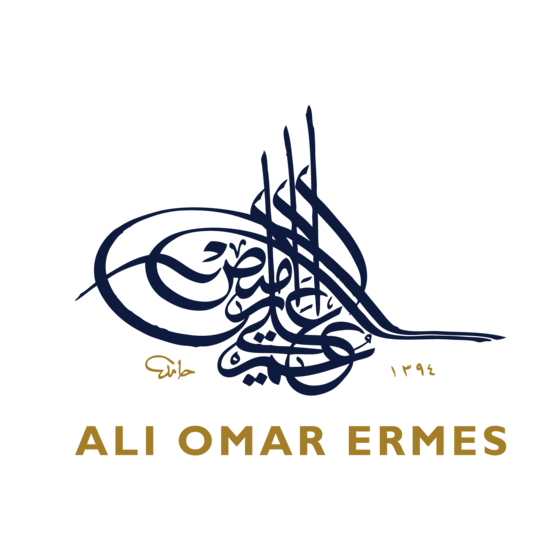Prophetic Medicine: Between the Nass and Empirical Experience
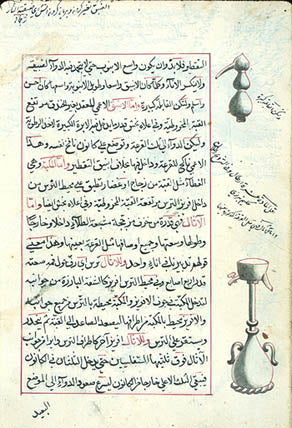
Prof Dr Omar Hasan Kasule Sr., Monday 1 February 1999
Prof. Dr. Omar Hasan Kasule, The Editor- in-Chief, International Medical Journal, Faculty of Medicine, International Islamic University Malaysiahttp://www.e-imj.com
BASIC CHARACTERISTICS OF PROPHETIC MEDICINE
Definition
Tibb Nabawi refers to words and actions of the Prophet with a bearing on disease, treatment of disease, and care of patients. Thus also included are words of the prophet on medical matters, medical treatment practiced by others on the prophet, medical treatments practised by the prophet on himself and others, medical treatments observed by the prophet with no objections, medical procedures that the prophet heard or knew about and did not prohibit, or medical practices that were so common that the prophet could not have failed to know about them. The prophet’s medical teachings were specific for place, population, and time. They however also included general guidance on physical and mental health that are applicable to all places, all times, and all circumstances. Tibb nabawi is not one monolithic or systematic medical system as some people would want us to believe. It is varied and circumstantial. It covers preventive medicine, curative medicine, mental well-being, spiritual cures or ruqyah, medical and surgical treatments. It integrates mind & body, matter and spirit.
Search for cures
The Prophet enunciated a basic principle in medicine that for every disease there is cure (ma anzala allahu daa; illa anzala lahu shifa’a- Kitaab al Tibb, al Bukhari). This is an impetus for us to look for remedies. Thus the prophetic medical tradition does not stop at only the medical teachings of the prophet but goes beyond to encourage humans to search and experiment with new treatment modalities. This implies among other things that prophetic medicine is not static. There is room for growth and even breaking new ground. Other implications of this hadith is that seeking treatment does not contradict qadar (pre-destination). Thus both the disease and its treatment are part of qadar.
Sources of tibb nabawi
Tibb nabawi has several sources: revelation (wahy), empirical experience of the prophet, folk medicine of that time in the Arabian peninsula, and it is possible that some medical knowledge of other communities could have been known in Makka or Madina at the time of the prophet. Our sources are from books of hadith and siira. Bukhari in his Sahih narrated 129 hadiths directly related to medicine. He devoted two books to medicine: kitaab al tibb and kitaab al mardha There are many other hadiths in Bukhari indirectly related to medicine. Other books of hadith also narrate more hadiths with relevance to medicine. Scholars have collected these hadiths together and some have related them to available medical knowledge. Among these authors are: Abu Nuaim (d. 430 AH), Ibn Qayyim al Jawziyat (d. 751 AH), and Jalaluddin al Suyuti (d. 911 AH). There are also more recent writings as articles and books. In his book, A Tibb al Nabawi, Imaam Ibn al Qayim mentions many medical conditions for which the Prophet provided guidance. He interpreted the hadiths using the available medical knowledge of his day. This book needs rewriting and it will look very different if written interpreting the prophetic traditions using today’s medical knowledge.
Scope of tibb nabawi
Tibb Nabawi as reported to us did not cover every conceivable disease at the time of the Prophet neither can it cover all ailments today or in the future in various parts of the world. This is easy to understand from the context that although the Prophet practiced medicine, his mission was not medicine and he was not a full-time physician. The hadiths of the Prophet should not be looked at as a textbook of medicine. They should be used for the diseases that they dealt with. The proper way to get additional medical knowledge is through research and looking for signs of Allah in the universe (2:164, 3:190, 10:5-6, 30:20-27, 39:59, 51:20-23).
Classification of tibb nabawi
The classification of traditions relating to medicine depends on the state of knowledge and changes with time and place. Jalaluddin al Suyuti published a book on tibb nabawi and divided medicine into 3 types: traditional, spiritual and preventive. Most of tibb nabawi is preventive medicine which is a very advanced concept given the level of scientific knowledge at the prophet’s time and certainly must have been divinely inspired. Al Suyuti (1994) listed preventive medical measures such as food and exercise. Other preventive measures taught in hadith include: quarantine for epidemics (hijr sihhi), forbidding urination in stagnant water (bawl fi mai raqid), use of tooth stick (siwaak), precautions in the house at night: fire & pests, leaving a country because of its water and climate. Study of tibb nabawi reveals that there are spiritual aspects of healing and recovery. Prayer, dua, recitation of the Quran, and remembrance of Allah play a central role. Psychosomatic diseases could respond to spiritual approaches. Curative medicine involved prophetic teachings about treatment of wounds, use of honey and the black seed for several ailments. The use of ruqyat (surat al fatiha, al muawadhatain) falls between physical curative and spiritual. The curative part of ruqyat can be understood in modern terms in the way the psyche can modulate immune mechanisms that protect against disease.
Examples of tibb nabawi
Ibn Qayim al Jawziyat listed many diseases with their recommended treatments from tibb nabawi. Diseases in tibb nabawi treatable by natural remedies: fever (humma), bowel movements (istitlaq al batan), dropsy (istisqa), wounds (jarh), epilepsy (sara), sciatica (irq al nisa), temparaments (tabau), skin itch (hakk al jism ), pleurisy (dhaat al janb), headache and hemicrania (sidau and shaqiiqat), inflammation of the throat (adhrat), enlargement of the heart (al mafuud), ophthalmia (al ramad), catalepsy (khudran al kulli), pimples (bathrat), skin eruptions (awraam), food poisoning (summ), witchcraft (sihr), and head lice. He also mentioned other diseases like: plague, leprosy, eye diseases, throat and tonsils, diarrhea, abdominal disease, fever, plague, snake bite, scorpion bite, food contamination by a fly, headache, nose bleeds, teeth, cough, dropsy, sprain, fracture, bite by rabid dog, and the evil eye. There are three therapeutic modalities used in Prophetic medicine: natural, spiritual, mixture of natural and spiritual. The treatments mentioned were honey (al ‘asal), cold water for fever (al mau al barid), diet (ghadha), milk (al laban), camel milk, camel urine, cupping (al hijaam), cauterization (al kayy), venesection with cauterization (qatiu al uruuq wa al kayy). The black seed (al habba al sauda) was especially emphasised.
APPLICATION OT TIBB NABAWI TODAY
General considerations
There are 3 aspects that we have to deal with regarding modern application of tibb nabawi. (a) is tibb nabawi part of the sharia and is therefore compulsory? (b) spatio-temporal changes (c) empirical research on tibb nabawi.
Tibb nabawi as part of the shariat
A correct answer to this question requires clarifying the very concept of shariat. The regulations about salat, menstruation, and toilet hygiene are part of the shariat rules that are immutable and there is no dispute about them. There are other regulations about the government (ahkam sultaniyat) that are part of the shariat but that change with circumstances. We can therefore distinguish two parts of the shariat: (a) fixed and immutable and applicable to all places and times and (b) fixed general principles whose details of application change with place and time. If we take the meaning of shariat in (b) above we can conclude that prophetic medicine is part of Islamic shariat that can change and grow using ijtihad and empirical research to apply general shariat principles to changing circumstances.
Spatio-temporal changes
Whatever the Prophet said or did was valid and must be followed because he never uttered any untruth even when joking. The ijtihad of the prophet even in worldly matters was protected (ma’suum). The Qur’an and hadith have records of divine intervention to comment on the prophet’s ijtihad on worldy matters such his advice on some aspects of agriculture that he later withdrew. Thus the record of authentic hadith that we have is valid whether in ‘aqidat or worldly matters. The attempt to distinguish between the medical teachings of the prophet-messenger and as a human living in Arabia at a particular historical epoch is not easy and is of no practical significance. The question is whether all or some of the tibb nabawi should be used today. If the diagnosis of a disease and all the circumstances surrounding it are exactly like those at the time of the Prophet, then we have no hesitation in saying tibb nabawi should be used. In actual practice it is difficult to ascertain that the conditions are the same. Changes in disease pathology, changes in the genetic pool of the patients, changes in the genetic pool of the medicinal plants, weather and climatic conditions are among many variables that may make a particular remedy recommended by the Prophet not appropriate for a medical condition today. The circumstances of time and place have changed. Indiscriminate use of the historical remedies could be using the right drug for the wrong disease. There is even a more serious linguistic problem. The meaning of words has changed. What was called fever in the 1st century AH may not be the same as the meaning of the same world today. Even medicinal plants like the black seed may not be exactly the same plant. We can therefore conclude that the teachings of tibb nabawi can only be a foundation to guide and encourage scientific research for remedies that are suitable for our times.
Empirical research on tibb nabawi
There is a lot of scientific interest in prophetic teachings on medicine. In Egypt for example many institutions are involved in research on traditional remedies: universities, the National Research Center, the Desert Institute, and the Horticultural Department of the Ministry of Agriculture. Many medicinal plants including the black seed have been investigated extensively and have been commercialised (Sayed 1980). The black seed (nigella sativa) is an example of a prophetic remedy that has been studied extensively by both Muslims and non-Muslims. Animal research has shown that the black seed is a potent anti-hypertensive (Tahir et al. 1993) and respiratory stimulant (Tahir at al 1993). It was shown to act against bacterial infection in mice (Hanafy et al. 1991). Al-Awadi et al (1991) studied the effect of a plant mixture including black seed on liver gluconeogenesis in rats with induced diabetes. Salomi et al (1991) studied the inhibitory effects of the black seed on chemical carcinogenesis in rats. Nair et al (1991) studied the modulatory effect of the black seed on toxicity in rats induced by a cis-platinum, a cancer treatment drug. Keshri et al (1995) studied the post-coital contraceptive effects of the black seed in rats. El-Dakhakhny (1965) studied the pharmacological properties of the black seed. Toppozada et al (1965) studied the antibacterial properties of the black seed with clinical applications. El-Fattary (1975) isolated and described the anti-bacterial principles from the black seed. Chakravarty (1993) studied the inhibition of histamine release from mast cells by the black seed. Salomi et al (1992) studied the anti-tumor activity of the black seed. Human studies o f the black seed have also been undertaken. Akhtar et al (1991) studied the effect of the black seed on nematode worm infection in children. Haq et al (1995) studied the effect of the black seed on human lymphocytes and polymorphonuclear leucocyte phagocytic activity. Laboratory studies provided scientific support for the traditional use of the black seed and its derived products As a treatment for rheumatism and related inflammatory diseases (Houghton et al 1995). The study of the black seed as a medicine has even extended to its side effects since no medicine however useful is free from side effects. Steinmann et al (1997) recorded occurrence of contact dermatitis after topical use of the black seed. Tennekoon et al. (1991) studied the possible hepato-toxicity of the black seed.
CONCLUSION AND FUTURE CHALLENGES
From the survey above we can conclude that tibb nabawi is an authentic and valid medical system. The general principles of this system are applicable at all times and all places. The specific remedies taught by the Prophet (PBUH) are valid and useful. They however can not be used today withiut undertaking further empirical research because of changes in humans, medicinal plants, the environment, and meanings of linguistic terms. Thus the conditions for which these remedies were prescribed in the 1st century of hijra may not be exactly the same as the conditions we are dealing with today. The many empirical studies on prophetic remedies like the black seed promise a good future for prophetic medicine to continue exerting its influence on medical practice.
REFERENCES
1.Sahih al Bukhari
Ibn Al Qayyim Al Jawziyyah: al Tibb al Nabawi
Abu Naim Al Asfahani: al Tibb al Nabawi
Al Hafidh Abi Abdillah Muhammad Bin Ahmad Al Dhahabi: al Tibb al Nabawi
Jalaluddin al Suyuti: al Tibb al Nabawi
El-Tahir-KE; Ashour-MM; al-Harbi-MM: The cardiovascular actions of the volatile oil of the black seed (Nigella sativa) in rats: elucidation of the mechanism of action. Gen-Pharmacol. 1993 Sep; 24(5): 1123-31
El-Tahir-KE; Ashour-MM; al-Harbi-MM: The respiratory effects of the volatile oil of the black seed (Nigella sativa) in guinea-pigs: elucidation of the mechanism(s) of action. Gen-Pharmacol. 1993 Sep; 24(5): 1115-22
Hanafy-MS; Hatem-ME: Studies on the antimicrobial activity of Nigella sativa seed (black cumin). J-Ethnopharmacol. 1991 Sep; 34(2-3): 275-8
Sayed-MD: Traditional medicine in health care. J-Ethnopharmacol. 1980 Mar; 2(1): 19-22
El-Dakhakhny-M: Studies on the Egyptian Nigella sativa L. IV. Some pharmacological properties of the seeds’ active principle in comparison to its dihydro compound and its polymer. Arzneimittelforschung. 1965 Oct; 15(10): 1227-9
Toppozada-HH; Mazloum-HA; el-Dakhakhny-M: The antibacterial properties of the Nigella sativa l. seeds. Active principle with some clinical applications. J-Egypt-Med-Assoc. 1965; 48: Suppl:187-202
Aqel-M; Shaheen-R: Effects of the volatile oil of Nigella sativa seeds on the uterine smooth muscle of rat and guinea pig
El-Fatatry-HM: Isolation and structure assignment of an antimicrobial principle from the volatile oil of Nigella sativa L. seeds. Pharmazie. 1975 Feb; 30(2): 109-11
Steinmann-A; Schatzle-M; Agathos-M; Breit-R: Allergic contact dermatitis from black cumin (Nigella sativa) oil after topical use. Contact-Dermatitis. 1997 May; 36(5): 268-9
Al-Awadi-F; Fatania-H; Shamte-U:The effect of a plants mixture extract on liver gluconeogenesis in streptozotocin induced diabetic rats. Diabetes-Res. 1991 Dec; 18(4): 163-8
Tennekoon-KH; Jeevathayaparan-S; Kurukulasooriya-AP; Karunanayake-EH: Possible hepatotoxicity of Nigella sativa seeds and Dregea volubilis leaves. J-Ethnopharmacol. 1991 Mar; 31(3): 283-9
Hanafy-MS; Hatem-ME: Studies on the antimicrobial activity of Nigella sativa seed (black cumin). J-Ethnopharmacol. 1991 Sep; 34(2-3): 275-8
Akhtar-MS; Riffat-S: Field trial of Saussurea lappa roots against nematodes and Nigella sativa seeds against cestodes in children. JPMA-J-Pak-Med-Assoc. 1991 Aug; 41(8): 185-7
Salomi-MJ; Nair-SC; Panikkar-KR Inhibitory effects of Nigella sativa and saffron (Crocus sativus) on chemical carcinogenesis in mice. Nutr-Cancer. 1991; 16(1): 67-72
Nair-SC; Salomi-MJ; Panikkar-B; Panikkar-KR: Modulatory effects of Crocus sativus and Nigella sativa extracts on cisplatin-induced toxicity in mice. J-Ethnopharmacol. 1991 Jan; 31(1): 75-83
Haq-A; Abdullatif-M; Lobo-PI; Khabar-KS; Sheth-KV; al-Sedairy-ST: Nigella sativa: effect on human lymphocytes and polymorphonuclear leukocyte phagocytic activity. Immunopharmacology. 1995 Aug
Keshri-G; Singh-MM; Lakshmi-V; Kamboj-VP: Post-coital contraceptive efficacy of the seeds of Nigella sativa in rats. Indian-J-Physiol-Pharmacol. 1995 Jan; 39(1): 59-62
Houghton-PJ; Zarka-R; de-las-Heras-B; Hoult-JR: Fixed oil of Nigella sativa and derived thymoquinone inhibit eicosanoid generation in leukocytes and membrane lipid peroxidation. Planta-Med. 1995 Feb; 61(1): 33-6
Chakravarty-N: Inhibition of histamine release from mast cells by nigellone. Ann-Allergy. 1993 Mar; 70(3): 237-42
El-Tahir-KE; Ashour-MM; al-Harbi-MM: The cardiovascular actions of the volatile oil of the black seed (Nigella sativa) in rats: elucidation of the mechanism of action. Gen-Pharmacol. 1993 Sep; 24(5): 1123-31
El-Tahir-KE; Ashour-MM; al-Harbi-MM: The respiratory effects of the volatile oil of the black seed (Nigella sativa) in guinea-pigs: elucidation of the mechanism(s) of action. Gen-Pharmacol. 1993 Sep; 24(5): 1115-22
Salomi-NJ; Nair-SC; Jayawardhanan-KK; Varghese-CD; Panikkar-KR: Antitumour principles from Nigella sativa seeds. Cancer-Lett. 1992 Mar 31; 63(1): 41-6
The images used in this article is taken from Islamic Medical Manuscripts at the National Library of Medicine, go to http://www.nlm.nih.gov/hmd/arabic/catalog_tb.html
Leave a comment
Also in SCIENCE & MEDICINE
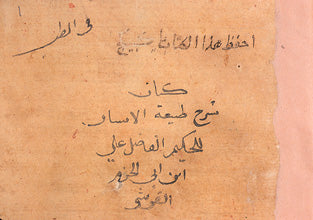
Revolution by the Ream
Paper, one of the most ubiquitous materials in modern life, was invented in China more than 2000 years ago. Nearly a millennium passed, however, before Europeans first used it, and they only began to manufacture it in the 11th and 12th centuries, after Muslims had established the first paper mills in Spain. The German Ulman Stromer, who had seen paper mills in Italy, built the first one north of the Alps at Nuremberg in the late 14th century.
The cultural revolution begun by Johann Gutenberg's printing press in 15th-century Mainz could not have taken place without paper mills like Stromer's, for even the earliest printing presses produced books at many times the speed of hand copyists, and had to be fed with reams and reams of paper. Our demand for paper has never been satisfied since, for we constantly develop new uses for this versatile material and new sources for the fiber from which it is made. Even today, despite the computer's promise to provide us with "paperless offices," we all use more paper than ever before, not only for communication but also for wrapping, filtering, construction and hundreds of other purposes.
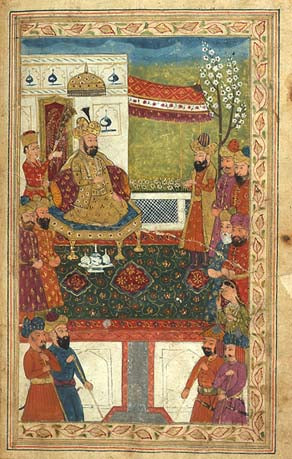
Scientific Inventions by Muslims
Inventions
Abul Hasan is distinguished as the inventor of the Telescope, which he described to be a Tube, to the extremities of which were attached diopters”.
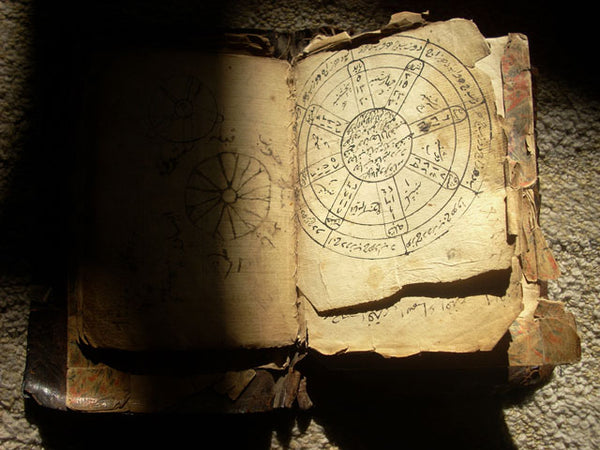
The Great Explorers of Islam
It was an Arab caravan which brought Hazrat Yusuf (Prophet Joseph) to Egypt. Moreover, the fertile areas in Arabia including Yemen, Yamama, Oman, Bahrein and Hadari-Maut were situated on the coast, and the Arabs being sea-faring people took sea routes in order to reach these places and fulfilling their commercial ventures.
